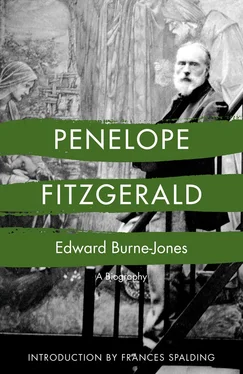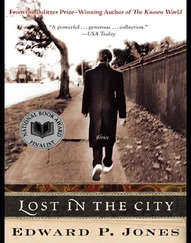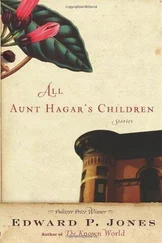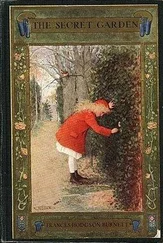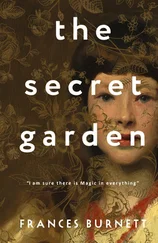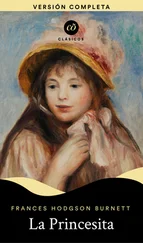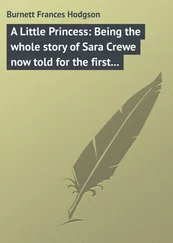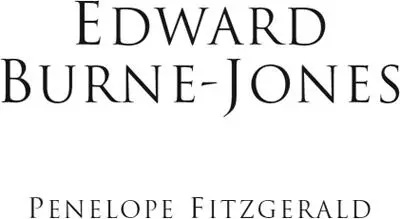

To Valpy, Tina and Maria
CONTENTS
Cover
Title Page
Dedication
Penelope Fitzgerald: Preface by Hermione Lee, Advisory Editor
Introduction
Picture Acknowledgements
Foreword and Acknowledgements
1. 1833–53: A childhood without beauty
2. 1853–5: Oxford: loss and gain
3. 1855–6: Morris and Jones; the quest for a vocation
4. 1856: An apprenticeship to Rossetti
5. 1856–60: The long engagement
6. 1860–2: Expansion: the firm, Ruskin and Italy
7. 1863–5: Green Summer : a season of happiness
8. 1865–6: Friends and enemies
9. 1866–7: A threat to the Earthly Paradise
10. 1867–70: Phyllis and Demophoön : the dangers of enchantment
11. 1870–6: The desolate years
12. 1876–8: A return to the world: the Grosvenor Gallery
13. 1878–84: King Cophetua : the studio in the eighties
14. 1884–90: The Royal Academy: ‘to think, Jones, of your coming to this!’
15. 1890–2: Briar Rose : Burne-Jones in the nineties
16. 1892–4: ‘The best in me has been love’
17. 1894–6: The Kelmscott Chaucer and the parting of friends
18. 1896–8: Rottingdean and Avalon
Picture Section
Appendix 1: Sources
1. Unpublished Material
2. Select Bibliography
Appendix 2: Paintings by Burne-Jones mentioned in the text and now in public collections
Notes to the Text
Index
By the Same Author
Copyright
About the Publisher
Penelope Fitzgerald Preface by Hermione Lee, Advisory Editor
When Penelope Fitzgerald unexpectedly won the Booker Prize with Offshore , in 1979, at the age of sixty-three, she said to her friends: ‘I knew I was an outsider.’ The people she wrote about in her novels and biographies were outsiders, too: misfits, romantic artists, hopeful failures, misunderstood lovers, orphans and oddities. She was drawn to unsettled characters who lived on the edges. She wrote about the vulnerable and the unprivileged, children, women trying to cope on their own, gentle, muddled, unsuccessful men. Her view of the world was that it divided into ‘exterminators’ and ‘exterminatees’. She would say: ‘I am drawn to people who seem to have been born defeated or even profoundly lost.’ She was a humorous writer with a tragic sense of life.
Outsiders in literature were close to her heart, too. She was fond of underrated, idiosyncratic writers with distinctive voices, like the novelist J. L. Carr, or Harold Monro of the Poetry Bookshop, or the remarkable and tragic poet Charlotte Mew. The publisher Virago’s enterprise of bringing neglected women writers back to life appealed to her, and under their imprint she championed the nineteenth-century novelist Margaret Oliphant. She enjoyed eccentrics like Stevie Smith. She liked writers, and people, who stood at an odd angle to the world. The child of an unusual, literary, middle-class English family, she inherited the Evangelical principles of her bishop grandfathers and the qualities of her Knox father and uncles: integrity, austerity, understatement, brilliance and a laconic, wry sense of humour.
She did not expect success, though she knew her own worth. Her writing career was not a usual one. She began publishing late in her life, around sixty, and in twenty years she published nine novels, three biographies and many essays and reviews. She changed publisher four times when she started publishing, before settling with Collins, and she never had an agent to look after her interests, though her publishers mostly became her friends and advocates. She was a dark horse, whose Booker Prize, with her third novel, was a surprise to everyone. But, by the end of her life, she had been shortlisted for it several times, had won a number of other British prizes, was a well-known figure on the literary scene, and became famous, at eighty, with the publication of The Blue Flower and its winning, in the United States, the National Book Critics Circle Award.
Yet she always had a quiet reputation. She was a novelist with a passionate following of careful readers, not a big name. She wrote compact, subtle novels. They are funny, but they are also dark. They are eloquent and clear, but also elusive and indirect. They leave a great deal unsaid. Whether she was drawing on the experiences of her own life – working for the BBC in the Blitz, helping to make a go of a small-town Suffolk bookshop, living on a leaky barge on the Thames in the 1960s, teaching children at a stage-school – or, in her last four great novels, going back in time and sometimes out of England to historical periods which she evoked with astonishing authenticity – she created whole worlds with striking economy. Her books inhabit a small space, but seem, magically, to reach out beyond it.
After her death at eighty-three, in 2000, there might have been a danger of this extraordinary voice fading away into silence and neglect. But she has been kept from oblivion by her executors and her admirers. The posthumous publication of her stories, essays and letters is now being followed by a biography ( Penelope Fitzgerald: A Life , by Hermione Lee, Chatto & Windus, 2013), and by these very welcome reissues of her work. The fine writers who have done introductions to these new editions show what a distinguished following she has. I hope that many new readers will now discover, and fall in love with, the work of one of the most spellbinding English novelists of the twentieth century.
Hermione Lee
2013
If you stand in front of a large Burne-Jones painting, such as King Cophetua and the Beggar Maid in Tate Britain, or any other of his major works in oil, stained glass or tapestry, the modern world immediately recedes. The spell cast is hard to resist. No other English artist in the late nineteenth century so completely transports us into another realm where literary or mythological allusions meld with gently refulgent colour, in compositions that have been cunningly designed and elaborately finessed. The subtle strength of Burne-Jones’s imagery owes much to his study of the Italian Renaissance, and in his work we find the last great flowering of the Renaissance tradition before modernism ran like a virus through all the arts, here and there turning its back on the past while determinedly heralding the importance of modernity. Burne-Jones, whose preference in art was for stillness, remained a stalwart opponent: having been brought up in Birmingham, in close proximity to some of the most damaging aspects of the Industrial Revolution, he famously announced that ‘the more materialistic science becomes, the more angels shall I paint’.
Burne-Jones’s response to the age in which he lived resonates with present-day anxieties about the social, cultural, financial and political implications of globalisation. Yet there are many reasons why he is so deeply sympathetic. The high-minded and deeply earnest John Ruskin cannot have been easy to tease, but when pseudo-Gothic and medieval public houses began to appear on street corners, Burne-Jones gently provoked him with the remark, ‘Your doing, my dear.’ Penelope Fitzgerald’s biography gives us Burne-Jones’s humour as well as his idealism, the man and his art, while tracing the trajectory of a career that transformed Ned Jones into Sir Edward Burne-Jones, the internationally renowned artist who was socially much in demand. Penelope Fitzgerald’s narrative teems with famous figures from the Victorian era, and inevitably it is bound up with the history of Pre-Raphaelitism, for although Burne-Jones and his friend William Morris were not part of the original Pre-Raphaelite Brotherhood, they were drawn in during the late 1850s by D. G. Rossetti. Burne-Jones’s early, painstakingly detailed pen-and-ink drawings on Arthurian subjects equal in intensity the finest productions in this vein. He went on to make more robust the Pre-Raphaelite achievement, while Morris busily created outlets for its decorative style, through his determination to revive craft and to reform domestic design.
Читать дальше
